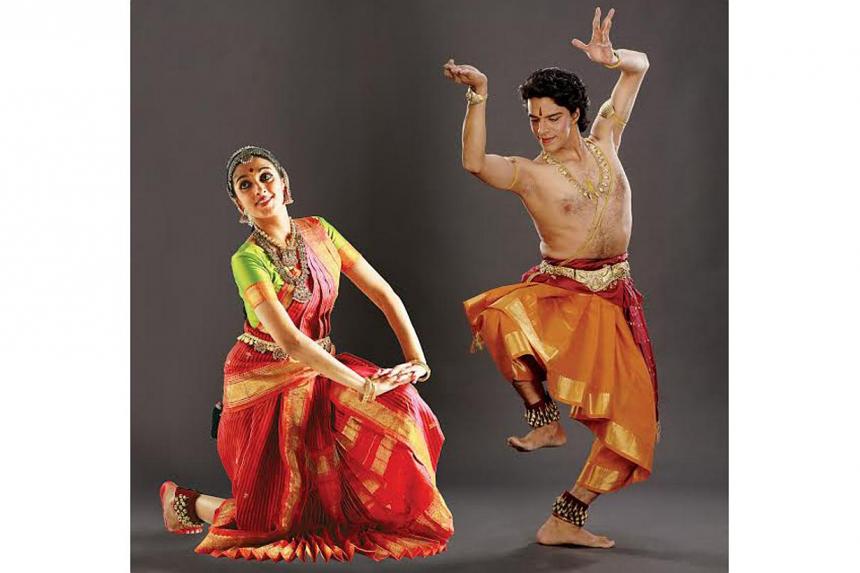To research an ancient symbol such as the Hindu god Siva, reflect on its contemporary significance and convey that through multiple artistic disciplines is no mean effort. Her own multidisciplinary background as a writer, playwright, theatre director and Carnatic vocalist, along with her understanding of Hindu philosophy, would seem to place Chennai-based Gowri Ramnarayan in an ideal position to attempt a recontextualisation of the prehistoric archetype of Siva as a 21st century metaphor.
Fire & Ash, a 90-minute performance piece that was part of the Dance India Asia Pacific Showcase, was scripted and directed by Ramnarayan who also played the pivotal role of narrator. The production at the Esplanade Recital Studio on Thursday witnessed the coming together of spoken text (mainly English) with dance, vocal music, poetry and visual art. Underscoring the work as an attempt "to understand the primordial paradox called Siva", the narrator then explained ash and fire as symbols of destruction of negative forces and rejuvenation of positive energies.
Ramnarayan adopted a multimodal approach in rendering her text, combining speech, hand gestures and bodily stances. She connected superbly to parts of dancer Anjana Anand's dramatic portrayals, as for instance in the depiction of the burning of Madana, the God of Love. Her creative use of speech and song blended harmoniously with carnatic vocalist Savita Narasimhan's mellifuous voice. It was a masterstroke on the director's part to have only Narasimhan on stage while the rest of the orchestra was made present through a recorded soundtrack. This allowed the audience to focus on the renditions by this outstanding and versatile vocalist who sang 5th to 21st century compositions of Indian poets in Tamil, Sanskrit, Hindi, Kannada and Bengali.
While the dance was primarily in the bharatanatyam idiom, the Mahadevi Akka composition brought out some interesting departures in movement. Anand, who performed most of the pieces, was very convincing in her portrayal of Siva's love in Teruvil Vaaraano and as Madana in the verse by Kalidasa. The high point was a rhythmic piece titled Anbe Shivam, a splendid represention of the omnipresence and timelessness of Siva through body movement, intricate rhythmic patterns and abhinaya (dramatic aspect of the dance).
However, Anand was unable to present a formidable enough image of the primal Siva. In general, her abhinaya was overly subtle and did not leave an impact. Sheejith Krishna's striking presence and mature portrayals in his two brief appearances made one wish that he was given a larger role to play on stage. In the Surdas bhajan, Krishna was brilliant as the sinister-looking wanderer, skilfully balancing stylised (natyadharmi) and realistic (lokadharmi) expression.
A more minimalist stage design would have lent greater focus to the stimulating performances. The visual art element, introduced through a series of paintings at the sides of the stage, appeared to have little connection with the other strands of the performance. As paradoxical as "the primordial paradox called Siva" was the fact that at times the theatre space seemed to transform into a classroom setting; the audience became attentive children listening to a teacher speak on Hinduism sometimes in a sermonising manner. It seemed caught between a lecture demonstration and performance. A clearer focus on performance would have done greater justice to the effort and conceptualisation.

